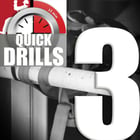 NFPA has posted more guides to prepare firefighters and other emergency responders for incidents involving electric vehicles (EVs). The guides are part of NFPA's Electric Vehicle Safety Training project, through which the association works with automobile manufacturers to inform the fire service and other first responders as the use of EVs increases.
NFPA has posted more guides to prepare firefighters and other emergency responders for incidents involving electric vehicles (EVs). The guides are part of NFPA's Electric Vehicle Safety Training project, through which the association works with automobile manufacturers to inform the fire service and other first responders as the use of EVs increases.
These free first responder guides have been added to the website, according to a May 5 post by Mike Hazell:
- 2014 Honda Accord HEV Emergency Response Guide
- 2014 Honda Accord PHEV Emergency Response Guide
- First Responder's Guide for the 2014 Infiniti Q70 Hybrid
- First Responder's Guide for the 2014 Infiniti QX60 Hybrid
- First Responder's Guide for the 2014 Nissan Pathfinder Hybrid
- First Responder's Guide for the 2014 Nissan LEAF
- First Responder's Guide for the 2015 Nissan LEAF
http://ohsonline.com/articles/2014/05/06/nfpa-offering-more-emergency-responder-guides-for-evs.aspx




 As an emergency responder, it is important to have a good understanding of the dangers and precautions regarding hazardous chemicals. Whether you’re a member of an in-plant industrial team or a municipal fire department, chemical hazards are always a critical factor in emergency incidents. That’s why it’s imperative to identify any particularly hazardous chemicals in your response area. Learn as much as you can, before the emergency happens.
As an emergency responder, it is important to have a good understanding of the dangers and precautions regarding hazardous chemicals. Whether you’re a member of an in-plant industrial team or a municipal fire department, chemical hazards are always a critical factor in emergency incidents. That’s why it’s imperative to identify any particularly hazardous chemicals in your response area. Learn as much as you can, before the emergency happens.


 Roco’s new Hierarchy of Fall Protection Safety Poster provides guidance on how to protect your workers from fall hazards by illustrating a series of steps in making safer choices as job duties are approached. It clearly explains the need for employers to make every attempt to abate fall hazards at their work sites by starting with the most protective level of fall protection. OSHA and ANSI references are used to emphasize the need for proper training and “fallen or isolated worker-at-height” rescue pre-plans when appropriate.
Roco’s new Hierarchy of Fall Protection Safety Poster provides guidance on how to protect your workers from fall hazards by illustrating a series of steps in making safer choices as job duties are approached. It clearly explains the need for employers to make every attempt to abate fall hazards at their work sites by starting with the most protective level of fall protection. OSHA and ANSI references are used to emphasize the need for proper training and “fallen or isolated worker-at-height” rescue pre-plans when appropriate. 


